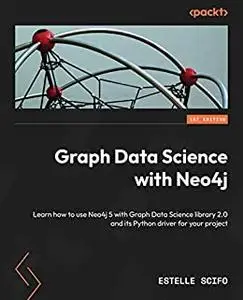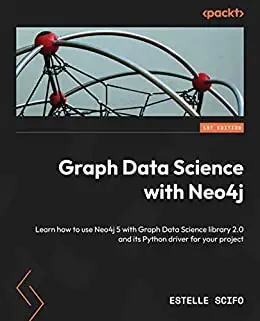Graph Data Science with Neo4j: Learn how to use Neo4j 5 with Graph Data Science library 2.0 and its Python driver for your project by Estelle Scifo
English | January 31, 2023 | ISBN: 180461274X | 288 pages | MOBI | 10 Mb
English | January 31, 2023 | ISBN: 180461274X | 288 pages | MOBI | 10 Mb
Supercharge your data with the limitless potential of Neo4j 5, the premier graph database for cutting-edge machine learning
Purchase of the print or Kindle book includes a free PDF eBook
Key Features
Book Description
Neo4j, along with its Graph Data Science (GDS) library, is a complete solution to store, query, and analyze graph data. As graph databases are getting more popular among developers, data scientists are likely to face such databases in their career, making it an indispensable skill to work with graph algorithms for extracting context information and improving the overall model prediction performance.
Data scientists working with Python will be able to put their knowledge to work with this practical guide to Neo4j and the GDS library that offers step-by-step explanations of essential concepts and practical instructions for implementing data science techniques on graph data using the latest Neo4j version 5 and its associated libraries. You'll start by querying Neo4j with Cypher and learn how to characterize graph datasets. As you get the hang of running graph algorithms on graph data stored into Neo4j, you'll understand the new and advanced capabilities of the GDS library that enable you to make predictions and write data science pipelines. Using the newly released GDSL Python driver, you'll be able to integrate graph algorithms into your ML pipeline.
By the end of this book, you'll be able to take advantage of the relationships in your dataset to improve your current model and make other types of elaborate predictions.
What you will learn
Who this book is for
If you're a data scientist or data professional with a foundation in the basics of Neo4j and are now ready to understand how to build advanced analytics solutions, you'll find this graph data science book useful. Familiarity with the major components of a data science project in Python and Neo4j is necessary to follow the concepts covered in this book.
Table of Contents
Feel Free to contact me for book requests, informations or feedbacks.
Without You And Your Support We Can’t Continue
Thanks For Buying Premium From My Links For Support
Without You And Your Support We Can’t Continue
Thanks For Buying Premium From My Links For Support



